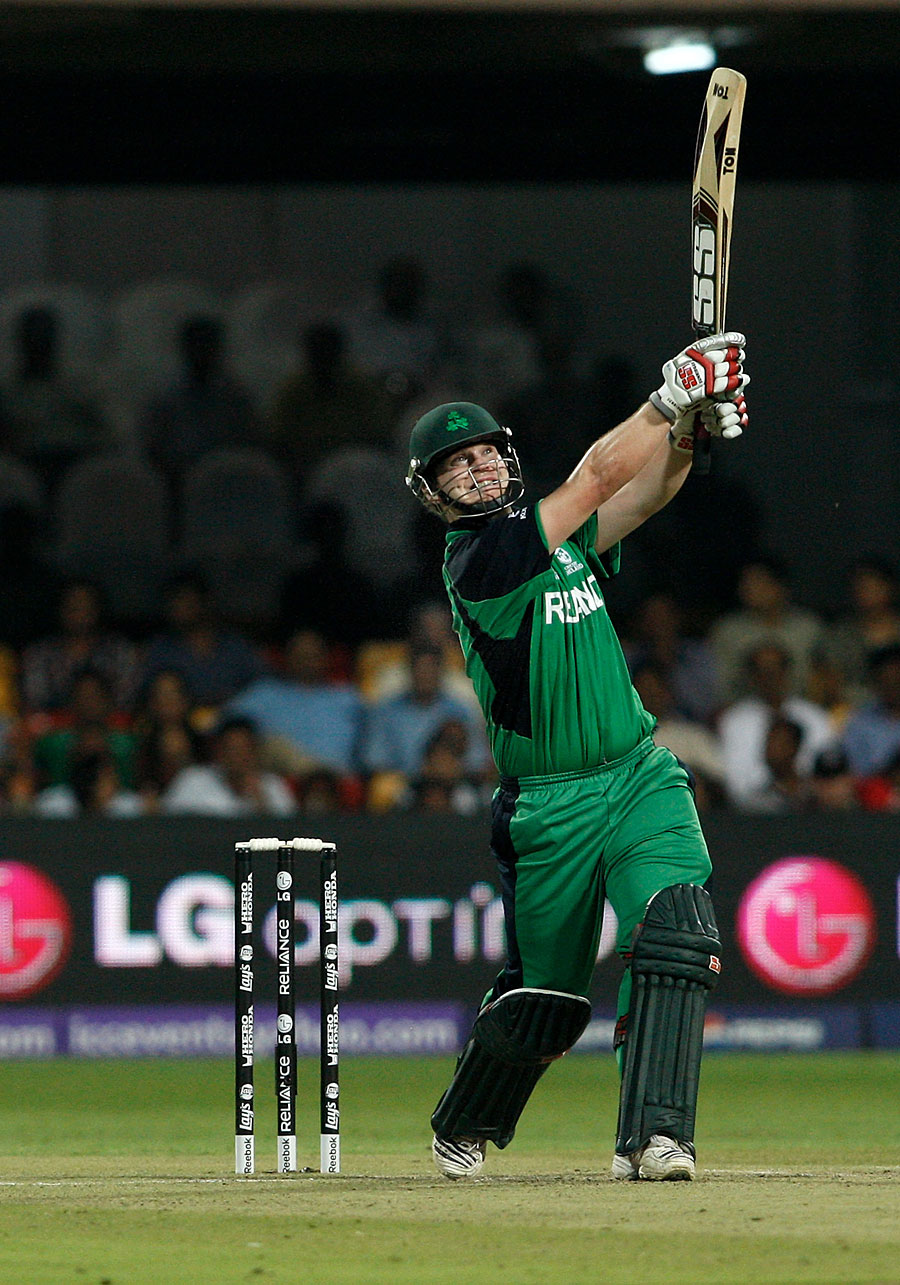The time is right for a Paul Stirling slamming in Pakistan
For a player so unlucky and deprived of opportunities, it’s almost fitting that Paul Stirling links up with PSL team Islamabad United as a replacement, and by virtue of international player selections several degrees separated.
Stirling joins American Ali Khan and Australian leg-spinner Fawad Ahmed to replace Colin Munro, Chris Jordan and Reece Topley at the franchise, with the tournament beginning on February 21.
Stirling’s signature on PSL paperwork is a long time coming. Omitted from this week’s IPL auction list, the opener is yet to taste high-level franchise cricket outside the UK, where he qualified as a local until the 2020 season. ECB red tape threatened to curtail his career despite holding a British passport, before Northamptonshire signed the opener as an overseas player. Stirling repaid the faith of his new employers, belting 232 runs for the Steelbacks at a strike rate of 152.63, and averaging over 25 at the top of the order.
It’d be unfair to suggest that Stirling is simply in the right place at the right time for his Pakistan opportunity, for it would imply that the times of his exclusion have been through the fault of his own. Nobody has compiled more T20I runs than Stirling since the start of 2019, and no other player can lay claim to scoring ten fifties in the same period.
In his first 50 career T20I innings, Stirling averaged 25.63 at a strike rate of 136.45. After his 50th T20I innings, in a period from August 2018, Stirling averages 37.80, at a strike rate of 142.96. Stirling’s timing in every sense of the word is now too good for him to go unsigned any longer.
Stirling’s career strike rate is yet to break the 140 barrier, though its climb from 106.25 to 139.27 is down to a series of contradictions and curiosities. For the 30-year-old, his slower starting approach, and an improvement against spin that belies the environment he is a product of, has revolutionised his game.
As observed in his ODI Super League exploits in England, Stirling has benefitted in limited overs formats by giving himself more time to settle in, building into a back-end flurry. In his swashbuckling 142 at the Ageas Bowl, Stirling took 27 balls to reach 20, before unleashing 122 runs off the next 101 deliveries. Stirling played out 17 dots on the way to 20, chewing up just 39 dot balls in the second half of the split. Even in his frantic 95 (47) T20 innings against the West Indies in Grenada last year, Stirling gave himself some leeway, racing to 50 from 20 balls after simmering at 5 not out off as many deliveries. Few players at any level, let alone against fellow Full Members, could make the same rocketed acceleration.
In the bookends of his innings, Stirling craves pace. With a still head and watchful eyes, Stirling makes up for a perceived lack of footwork on the drive forward of square on the off-side. His stance and backlift prime him for pull shots even against tight and miserly bowling, with a slash over backward point punishing width. Few quick bowlers have the wood over Stirling in recent years, with the opener striking a rare balance between anchoring and aggression. In all international formats over the last five years (with status), Stirling has scored 4226 runs for Ireland, over 1500 more runs than second on the list, Kevin O’Brien.
For all of Stirling’s bludgeoning, it’d be an injustice not to highlight his craft against spin bowling, the final piece of his batting approach. At international T20 level, Stirling averages 35.35 against spin, in comparison to 19.20 against the quicks.
While these figures accentuate the need to be measured at the top, they highlight a developed repertoire of shots against slower bowling. Unflustered when bowlers angle into him, Stirling’s kitbag of sweeps open up run-scoring opportunities. Able to play the ball on length and irrespective of the direction of spin, Stirling shifts across to occasionally take an off-stump guard when countered with wider bowling, to churn out vital middle-over runs.
Stirling has been dismissed just six times between 30 and 50 in his T20I career, with just one of those in his last 26 innings, in a record from January 2019 to now. Over the last two years, Stirling has been dismissed for a score under 20 just ten times in 26 innings (38%) in comparison to 27 times in 51 innings (53%) from 2009 to 2019.
Stirling’s impact in Pakistan could be seen as a masterstroke to the casual observer, though his game, developed by significant time in parts of Asia and the Middle-East, makes his recruitment a logical choice. On top of Ireland tours, Stirling has turned out in several leagues across Bangladesh, Nepal, Sri Lanka and UAE. Stirling boasts 419 runs at a strike rate of 151.26 and an average of 23.28 in the BPL, and after combatting the slow pitches at the Everest Premier League in late 2018, Stirling still sizzled as one of seven players in the entire competition to finish with a strike rate of over 130 (min. 100 runs).
In recent times though, Stirling has shown his versatility via achievements in contrasting formats – in the midst of the rigours and pressures of World Cup qualification through the ODI Super League, and the game’s flavour of the month, the Abu Dhabi T10.
Nominated for ICC Player of the Month honours, Stirling breezed to consecutive centuries in the second and third matches against Afghanistan at the Sheikh Zayed Stadium, unflustered by an attack of Rashid Khan, Mujeeb Ur Rahman and co. Edged out by Rishabh Pant and his heroics in Australia for the accolade, Stirling turned his attention to the game’s youngest format, the Abu Dhabi T10, where he struck at 230 across nine innings. Stirling’s 64* (32) against the Bangla Tigers was complimented with a score of 48 off 13 balls against the Northern Warriors, in a display that had commentators almost in a wallow of despair, as he fell short of matching Chris Gayle and Waseem Muhammad’s 12-ball fifty efforts at the tournament. Stirling rather poetically found Waseem in the deep, though finished the tournament at the top of the runs table for his Abu Dhabi side.
Was it this recent success that kicked the door down? We’ll never know, but there’s little doubt the 30-year-old is battle-ready through performances against some of the world’s best. Not many players boast the experience of almost 250 T20 matches before lining up for their first game in a new competition.
To say Paul Stirling is benefitting by other players’ absence would be playing down the quality he delivers. Hardened by a game that has given no quarter, one would think a leading player of the emerging game will do more than just make up the numbers.
https://emergingcricket.com/opinion/the-time-is-right-for-a-paul-stirling-slamming-in-pakistan/











 - played a gem today.
- played a gem today.


 they can cry all they want..
they can cry all they want..